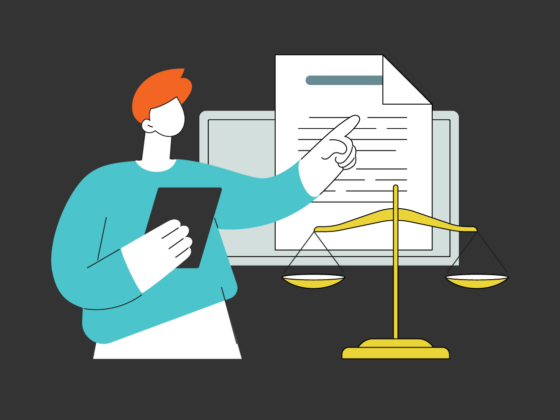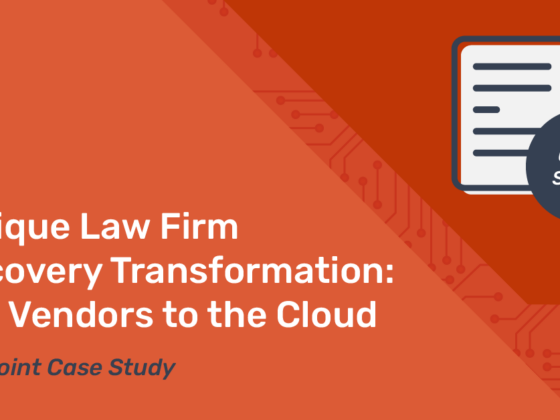Are you looking to replace Summation or Concordance – the old warhorses of litigation technology? Well, you’ve got company.
It’s one of the most common scenarios new clients mention when coming to standardize their practice on Nextpoint. They have come to the clear conclusion that a Summation or Concordance workflow just isn’t working (or flowing) for them any longer, and they want something smarter and more streamlined.

Remember when this was state-of-the-art?
Those two applications, and other software created in the 1980s, were powerful for their time. But, groundbreaking when they were initially released, they’ve passed their prime. These applications are from a bygone era of computing – the pre-Internet age. They are software programs designed to run on computers like this one to the left. An 84 MB hard drive for 7 grand. How soon we forget.
My smartphone’s storage is over 700 times that today at less than 10% of the cost. And the software that runs on my Droid would not run on the Tandy. Simply a different era. Different technology.
When faced with the realization that the 80s are not returning anytime soon and the Internet is not going away, what are the steps law firms generally take to replace outdated, legacy software and upgrade their internal ediscovery and litigation practice solutions?
Here’s some insight as to how this process has worked at firms who have standardized with Nextpoint technology.
★ Step One
Embrace the need for an upgrade.
Generally, most of the attorneys and support staff know their technology could be better – that there ARE more contemporary technologies and more streamlined solutions available. To the credit of the profession, I’ve never spoken to an attorney who’s insisted their technology is as good as it gets.
I realize internal change is hard. Organizational inertia is deeply embedded, particularly in law firms. “Things move slowly around here,” is a sentiment offered by many of our clients.
The key to change, in life as in business, is to admit a big enough problem exists that makes change necessary, even when faced with some degree of pain.
You’ve got to really WANT to work more efficiently. Because it will take some bit of effort to get there. But in the end, you’ll be able to do much more of the lawyering you like doing and much less of the techy stuff you don’t.
Managing data sets and navigating multiple, complex software workflows is not why most people chose work in the legal industry. At least, I’ve never seen it in the law school marketing brochures.
But Internet technology has changed the practice of law. You’ve got to recognize that change, and commit to change with it.
★ Step Two
Get everyone on board and motivated.
The next step is to talk about it, and ensure there is a consensus to change.
A partner managing a group of litigators – a task akin to herding cats – knows the headaches of instituting standardization across the practice.
A litigation support specialist or a paralegal responsible for technology may have a steep challenge to get lawyers to do anything differently, even if it is simpler, faster, and smarter.
You’ve got to call a meeting with all the key stakeholders in a room and ask some questions:
- Do we agree we have a technology problem?
- Will a change in technology benefit us all (and our clients)?
- Are we all willing to do what it takes to make that change?
- How important is this to our practice?
If there are parties reluctant to adapt to new technology, it’s important to understand their motivation.
Quite often for support staff, it’s about job security. They’re job may be closely aligned to the old software. New technology means unfamiliar territory, possibly obsolescence or redundancy. For attorneys, resistance might stem from a simple fear of the unknown, or again, just deeply embedded inertia. What’s the motivation if a law firm is “getting by” today?
The motivation needs to be substantial. While new technology isn’t critical for a firm to operate, it IS critical for a firm that’s looking excel – to outpace their competition in litigation and in business development.
That said, in our experience, any stakeholder at a firm who is proactively looking to quash a legacy software replacement has a good chance at success. So, it’s important to identify these people early on, and manage their impact on the process.
We are frequently approached by motivated individuals at firms who have not yet solicited internal input. They are “looking at options” and looking for an answer before they ask the question. That’s not a good strategy. First, develop your internal resources. Only then does it make sense to start looking at replacement options.
★ Step Three
Understand how your practice works with eDiscovery now.
Finding the perfect e-discovery technology solution begins with understanding how data currently moves through your law firm. Processing and search capabilities, trial support options, security provisioning, casework collaboration – any or all of these can be mission critical for you depending on the nature of your practice.
When we begin working with firms, a critical first step is to analyze and document the existing workflow within that firm. This helps both Nextpoint and the client to have a firm grasp of the specific benefits the client is seeking and the opportunities for streamlining processes.
Some firms have issues with data processing; others need simpler, faster software for contract reviewers, and other clients come to us because an end-client or judge wants to review data from a laptop.
There are many workflow log-jams that compel firms to change, not just one. Understanding your current workflow competencies and deficiencies is essential to a smooth and accurate technology transition.
★ Step Four
Research a new eDiscovery software solution.
A critical part of evaluating replacements for legacy technology is preventing “paralysis by overanalysis.” As my friend Andy Crestodina at Orbit Media told me once, “The best time to start using new software is the second it’s better than the old software, even if it’s not completely implemented or institutionalized.”
There are lots of software options, and plenty of ways to spend a little or a lot of money. Ultimately, word of mouth and professional referrals should carry the day for most law firms weighing their options.
Do your research. Ask providers on your short-list to supply referrals from other firms they have worked with. Talk candidly to these firms about their experiences and their challenges. Any decent technology provider should be able to produce case studies, success stories, industry reviews and direct contacts at happy clients.
★ Step Five
Pass through eDiscovery costs to end-clients.
New technology can not only improve service delivery, but also impact the bottom line. Sometimes this is the primary impetus for a jettison of legacy software.
Today, you’re spending some money on internal overhead that’s considered the cost of doing business – rent, utilities, malpractice insurance, etc.. But your software costs shouldn’t fall under this umbrella.
Legacy installations of on-premise software and servers have always fallen into this ‘cost of doing business’ bucket. But, new litigation software with clear visibility into storage and software usage on a per-matter basis, allows you to turn your expenses into a pure pass through cost to end-clients.
Just as shipping charges, travel charges, or court filing fees are specifically applied to individual matters, so too should your eDiscovery software expenses.
It is essential to highlight the true value of the technology change for your clients. By understanding how new technology can improve service delivery for them, you’ve set up a great conversation to potentially pass through the expenses.
This makes direct improvements to your bottom line. There needs to be an expectation that firms WILL utilize modern technology to provide efficient legal service around electronic data; and an expectation that the associated costs will be the client’s responsibility.
You better believe the firms that we have chosen for our own legal needs are leveraging the latest Internet technologies for communication, research and delivery of work product. We expect it, and we realize the minimal costs we bear for that tech is outweighed by the speed and qualitative service we get from them.
The times, they are a-changin’.
As John C. Maxwell said, “Change is inevitable. Growth is optional.” To embrace and celebrate change is especially difficult for a profession that’s built on precedence. But it is necessary for continued growth.
Building a firm culture committed to continuous improvement of practice workflows is vital. When done right, implementing change is more easily achievable. The rewards are found in more satisfied clients and a tighter bottom line.
Has your firm upgraded your eDiscovery technology recently? We’d love to hear about obstacles you overcame or benefits you’ve realized after making a change.







